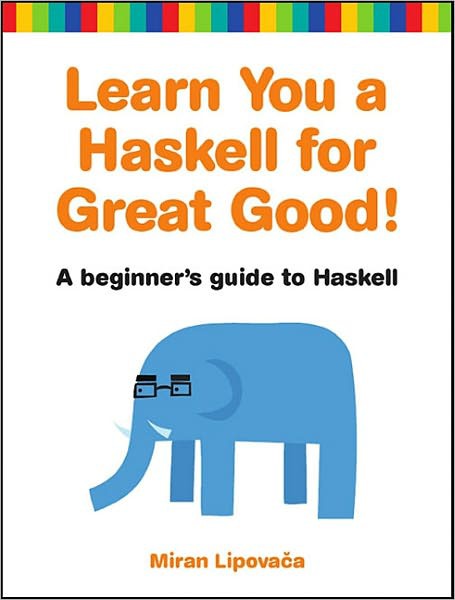

Most ebook files are in PDF format, so you can easily read them using various software such as Foxit Reader or directly on the Google Chrome browser.
Some ebook files are released by publishers in other formats such as .awz, .mobi, .epub, .fb2, etc. You may need to install specific software to read these formats on mobile/PC, such as Calibre.
Please read the tutorial at this link: https://ebookbell.com/faq
We offer FREE conversion to the popular formats you request; however, this may take some time. Therefore, right after payment, please email us, and we will try to provide the service as quickly as possible.
For some exceptional file formats or broken links (if any), please refrain from opening any disputes. Instead, email us first, and we will try to assist within a maximum of 6 hours.
EbookBell Team

5.0
90 reviewsIt's all in the name: Learn You a Haskell for Great Good! is a hilarious, illustrated guide to this complex functional language. Packed with the author's original artwork, pop culture references, and most importantly, useful example code, this book teaches functional fundamentals in a way you never thought possible.
You'll start with the kid stuff: basic syntax, recursion, types and type classes. Then once you've got the basics down, the real black belt master-class begins: you'll learn to use applicative functors, monads, zippers, and all the other mythical Haskell constructs you've only read about in storybooks.
As you work your way through the author's imaginative (and occasionally insane) examples, you'll learn to:
Short of eating the author's brain, you will not find a better way to learn this powerful language than reading Learn You a Haskell for Great Good!
Excerpt from the Introduction
Haskell is fun, and that’s what it’s all about!
This book is aimed at people who have experience programming in imperative languages—such as C++, Java, and Python—and now want to try out Haskell. But even if you don’t have any significant programming experience, I’ll bet a smart person like you will be able to follow along and learn Haskell.
My first reaction to Haskell was that the language was just too weird. But after getting over that initial hurdle, it was smooth sailing. Even if Haskell seems strange to you at first, don’t give up. Learning Haskell is almost like learning to program for the first time all over again. It’s fun, and it forces you to think differently.
NOTE
If you ever get really stuck, the IRC channel #haskell on the freenode network is a great place to ask questions. The people there tend to be nice, patient, and understanding. They’re a great resource for Haskell newbies.
So, What's Haskell?
Haskell is a purely functional programming language.
In imperative programming languages, you give the computer a sequence of tasks, which it then executes. While executing them, the computer can change state. For instance, you can set the variable a to 5 and then do some stuff that might change the value of a. There are also flow-control structures for executing instructions several times, such as for and while loops.
Purely functional programming is different. You don’t tell the computer what to do—you tell it what stuff is. For instance, you can tell the computer that the factorial of a number is the product of every integer from 1 to that number or that the sum of a list of numbers is the first number plus the sum of the remaining numbers. You can express both of these operations as functions.
Read the Introduction (PDF) in its entirety.
About the AuthorMiran Lipovaca is a computer science student in Ljubljana, Slovenia. In addition to his passion for Haskell, he enjoys boxing, playing bass guitar, and, of course, drawing. He has a fascination with dancing skeletons and the number 71, and when he walks through automatic doors he pretends that he's actually opening them with his mind.